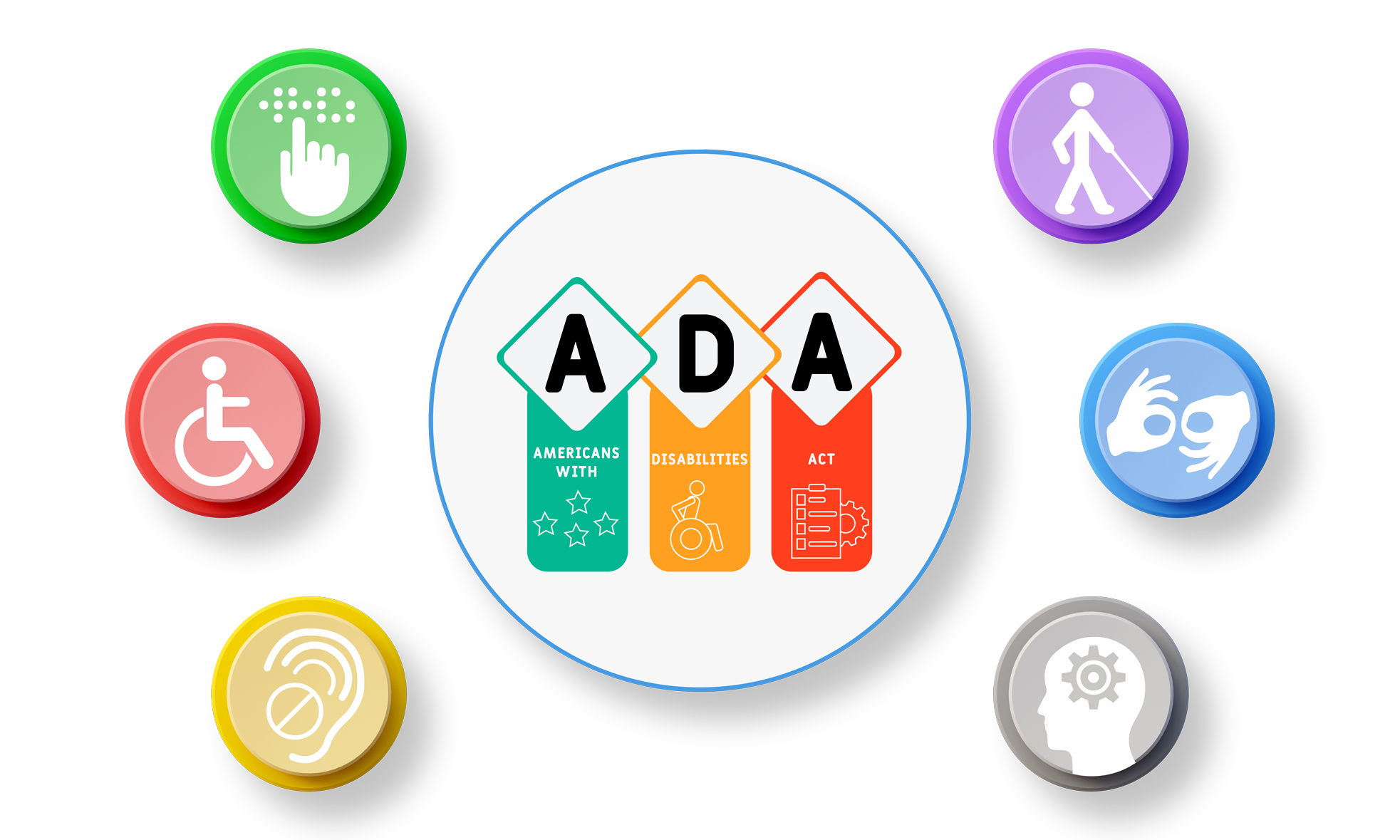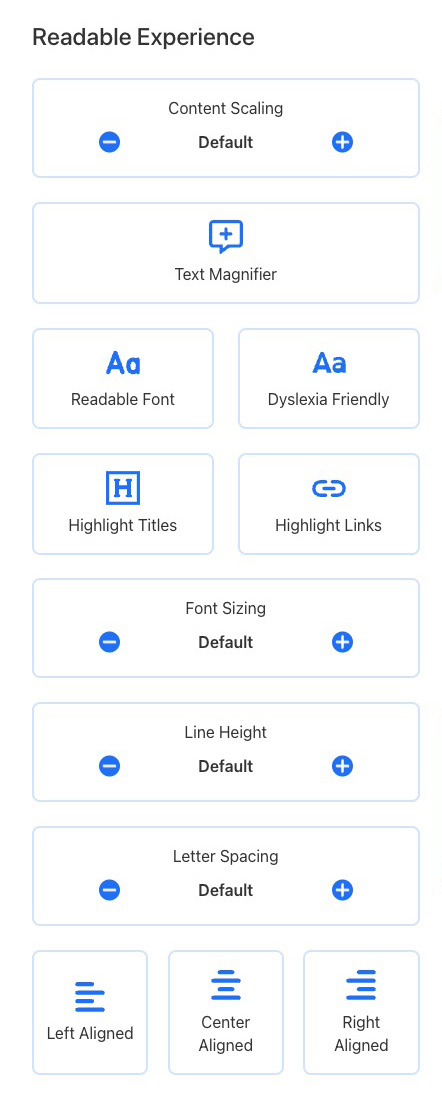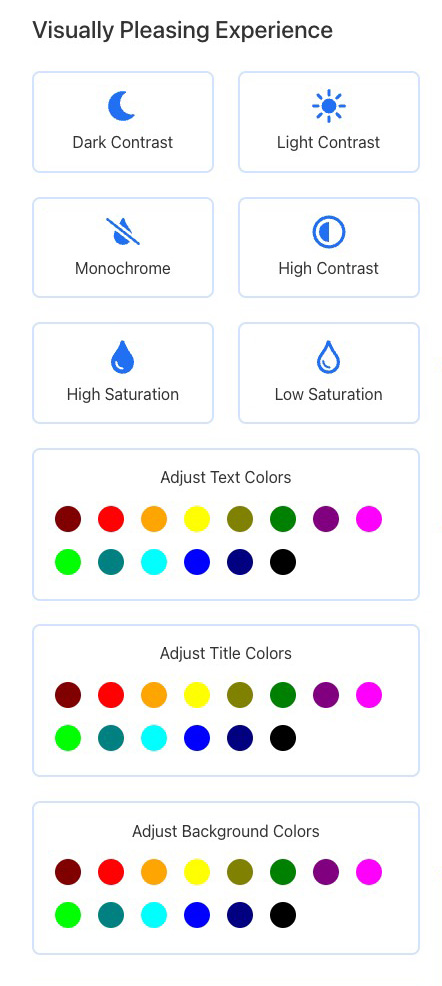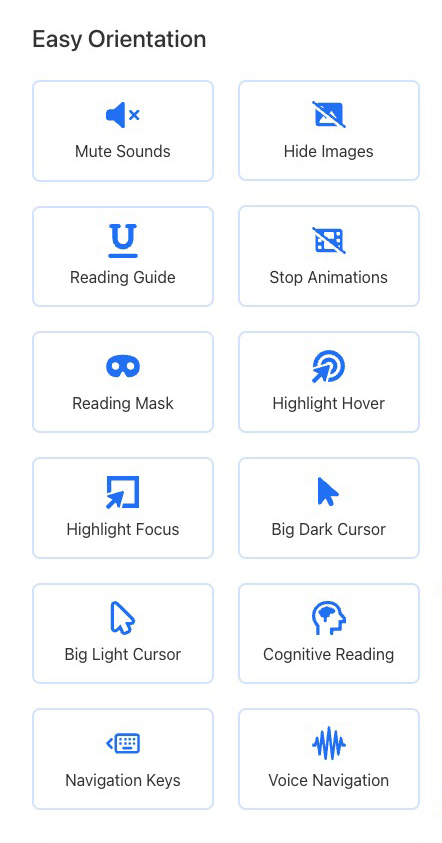WCAG & ADA Compliant
Provide Web Accessibility to Disabled Individuals

ADA (Americans with Disabilities Act) Compliant Website Service
Everyone should be able to enjoy your website , regardless of ability!
Ensuring that your website is ADA (Americans with Disabilities Act) compliant is important
Ensuring that your website is ADA-compliant is indispensable for meeting legal requirements, enhancing accessibility, improving user experience, expanding audience reach, reaping SEO advantages, and upholding ethical standards. Crafting an inclusive online environment through website accessibility is not just a legal obligation, it is a pivotal stride towards fostering a more diverse and welcoming digital landscape.

Websites need to be WCAG (Web Content Accessibility Guidelines) and ADA (Americans with Disabilities Act) compliant primarily to ensure accessibility for all users, including those with disabilities. Here are some key reasons why such compliance is important:
Inclusivity and Accessibility: By following WCAG and ADA guidelines, websites can be designed to be more accessible to people with a wide range of disabilities, such as visual, auditory, physical, speech, cognitive, and neurological disabilities. This helps to ensure that everyone has equal access to information and services.
Legal Compliance: In many regions, including the United States, there are legal obligations for websites to be accessible. Laws like the ADA require that websites offer equal access to persons with disabilities, and failure to comply can result in legal actions and significant penalties.
Broader Audience: Accessibility improvements can widen the reach of your website, as more people can use and benefit from it. This can lead to increased customer satisfaction, more traffic, and potential improvements in conversion rates.
Search Engine Optimization (SEO): Many accessibility best practices align with SEO best practices. For example, using proper HTML tags, providing alt text for images, and ensuring a site is navigable can improve search engine rankings.
Enhanced Usability: Accessibility features often improve the overall user experience for all visitors. Enhancements like better contrast, intuitive navigation, and clear content structures make websites easier to use for everyone.
Corporate Responsibility: Committing to accessibility demonstrates a company’s dedication to social responsibility and can enhance its reputation. Companies that prioritize accessibility show that they value diversity and inclusivity.
Future-proofing: As technology evolves and legal standards get updated, having a strong foundation in accessibility can help future-proof your website against newer requirements and devices, such as voice assistants and other emerging technologies.
By making your website WCAG and ADA compliant, you create a more inclusive environment online, ensuring that everyone, regardless of their abilities, can access and enjoy the digital content and services you provide.
The Accessibility modes
Accessibility Profiles, Crafting Tailor-Made Accessible Experiences
Accessibility Profiles consolidate common accessibility configurations that cater to the unique needs associated with various disabilities. By selecting the appropriate profile, users can effortlessly personalize their digital experience to suit their individual requirements.
Web accessibility encompasses a collection of rules, behaviors, code standards, and design guidelines intended to ensure that individuals with disabilities can effectively utilize websites.
Readable Experience
Content Adjustments
This section empowers users to customize the display of your site’s content, ensuring optimal readability for individuals with specific disabilities. Those with vision impairments, such as blurred vision or age-related sight issues, rely on these adjustments to tailor your website’s content to their unique requirements.


Visually Pleasing Experience
Display Adjustments
This section allows for adjustments in colors and contrast. Individuals with different forms of color blindness or visual impairments may struggle to perceive your content clearly, while users sensitive to light may find it challenging to browse websites with white backgrounds.
Section adjustments include: High Contrast, High Saturation, Low Saturation, Dark Contrast, Light Contrast, Monochrome, Text Colorization, Title Colorization, and Background Colorization.
Easy Orientation
Orientation Adjustments
This interface section provides adjustments tailored to enhance the browsing experience for individuals with vision impairments, cognitive disabilities, or motor impairments. These adjustments aim to assist users by offering shortcuts, guiding elements, and minimizing distractions and unnecessary noise on your website.
Section adjustments include: Hide Images, Mute Sounds, Reading Guide, Reading Mask, Stop Animations, Highlight Focus, Highlight Hover, Big Light Cursor, Big Dark Cursor, Cognitive Reading, Navigation Key, and Voice Navigation.

Pricing
Enhance the accessibility of your website for all users with our top-tier solution designed for website accessibility needs, available at just $19 per month.